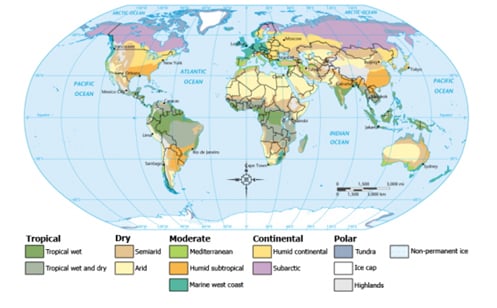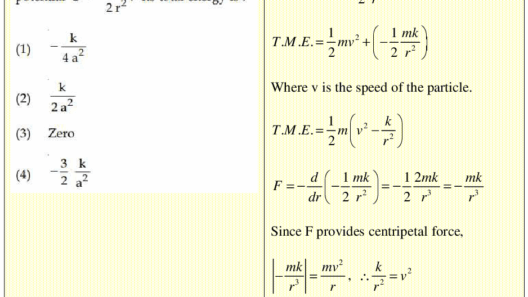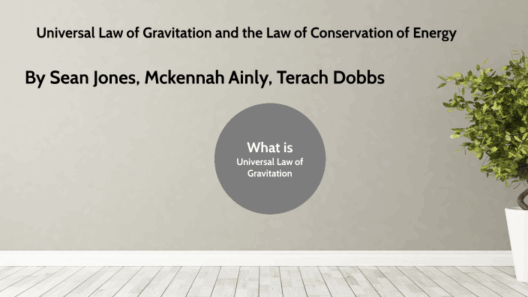The concept of energy conservation stands as a fundamental pillar of physics and, indeed, life itself. Energy, in its myriad forms—kinetic, potential, thermal, and more—permeates every aspect of our existence. However, the apparent simplicity of energy conservation often masks profound implications and intricacies deserving of exploration.
At its core, the principle of conservation of energy asserts that energy cannot be created or destroyed; it can only be transformed from one form to another. This universal law, which undergirds much of our scientific understanding, is easily illustrated through everyday phenomena. Consider a pendulum swinging back and forth. At the apex of its swing, it possesses maximum potential energy. As it descends, that potential energy converts into kinetic energy, reaching its peak velocity at the lowest point of the swing only to rise again, reversing the process. This cyclical transformation embodies not just a mechanical principle but also an intriguing dance of energy exchange in nature.
As we delve deeper into the subject, we uncover a tapestry of interconnected ideas. The conservation of energy is not merely a theoretical notion but an essential criterion for understanding the universe. From the tiniest subatomic particles to vast celestial bodies, energy flows incessantly, creating a dynamic web of interactions. This interconnectivity leads us to some astonishing observations. For example, when we ponder ecological systems, it becomes evident that energy conservation is integral to the sustainability of life. Photosynthesis epitomizes this; plants capture solar energy, converting it into chemical energy, which is then transferred through food webs, sustaining diverse forms of life.
It is essential to recognize that the conservation of energy extends beyond the physical realm. The implications resonate in socio-economic structures and global energy policies. As societies transition towards sustainable practices, understanding the principles of energy conservation becomes increasingly crucial. The shift from fossil fuels to renewable sources, such as solar, wind, and hydroelectric power, hinges upon grasping how energy can be harvested, converted, and reused while minimizing waste.
Another fascinating aspect of energy conservation lies in thermodynamics—particularly the first and second laws. The first law reiterates the principle of energy conservation, while the second law introduces the concept of entropy, describing the tendency for energy to disperse and systems to move towards disorder. This duality presents a striking insight: while we can harness and convert energy, the efficiency of such processes is often limited. The realization that real-world applications yield energy losses invokes a deeper understanding of resource management and environmental stewardship.
In teaching the conservation of energy, it is vital to utilize engaging pedagogical methods that resonate with diverse learners. Hands-on experiments, for example, can vividly illustrate energy transformations. A simple demonstration using a toy car can effectively showcase both kinetic and potential energy. By adjusting the height from which the car is released, students witness firsthand how gravitational potential energy converts into kinetic energy—as the car races down the incline.
Interactive models aid in clarifying concepts further. Leveraging simulation tools allows students to manipulate variables, observing how energy within a system behaves dynamically. Such digital platforms can vividly portray energy conservation across various systems, whether mechanical, electrical, or even biological, fostering an environment of inquiry and exploration.
Storytelling also plays a crucial role in making abstract concepts tangible. Narratives that encapsulate the journeys of prominent scientists, such as James Joule or Albert Einstein, and their contributions to our understanding of energy can ignite curiosity and inspire future generations. By weaving history and science, we illuminate the importance of energy conservation not just as a theory, but as a powerful lens through which we can view and address contemporary environmental challenges.
Furthermore, fostering critical thinking is imperative in education. Encouraging students to question how energy is utilized and wasted in their daily lives cultivates a sense of agency regarding energy consumption. Discussions around practical applications, like energy-efficient appliances, renewable energy technologies, and the importance of reducing carbon footprints, can solidify the connection between the scientific principle of conservation and its implications for sustainability.
Moreover, educational institutions have a profound responsibility to lead by example. A commitment to sustainability, whether through adopting energy-efficient practices or integrating renewable energy sources, provides a substantive backdrop for students to understand the importance of energy conservation in action. Schools serve not only as centers of learning but also as models of ecological responsibility.
As we contemplate the future, the urgency of addressing climate change accentuates the necessity for a comprehensive understanding of energy conservation. The burgeoning global energy crisis necessitates innovative solutions informed by the principles of conservation. As stewards of the planet, we must champion the efficient use of energy and advocate for policies that reflect an acute awareness of conservation principles. Only through concerted effort—rooted in education, innovation, and action—can we mitigate environmental degradation and foster a sustainable future.
In conclusion, teaching and explaining the conservation of energy requires a multifaceted approach that intertwines scientific principles with practical, real-world applications. By engaging learners intellectually and emotionally, we not only convey the significance of energy conservation but also inspire a generation committed to forging a sustainable future. As we harness the transformative power of education, we lay the groundwork for a more conscientious and harmonious relationship with the natural world.






